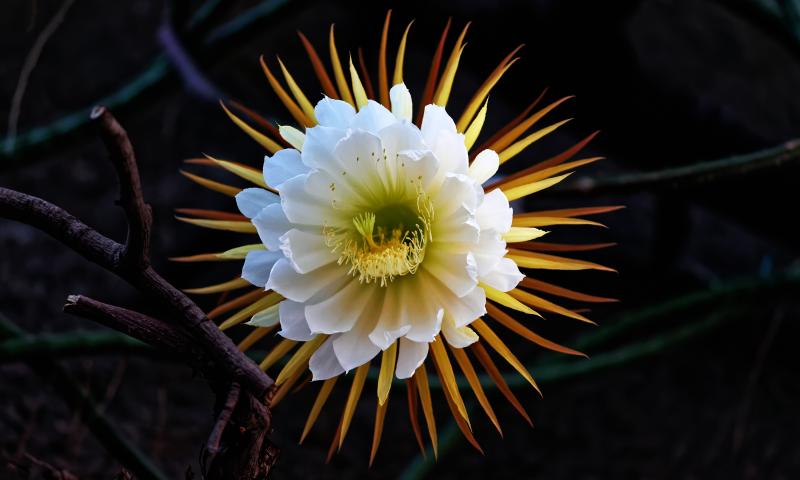 />
/>
Night Blooming Cereus, scientifically known as Cereus grandifloras, has captivated the hearts and souls of nature enthusiasts for centuries. With its ephemeral nocturnal blossoms and intriguing chemical makeup, this unique plant not only paints a spectacular visual display but also offers numerous health benefits. Let's delve deep into the world of this moonlit marvel.
Botanical Characteristics
The Night Blooming Cereus, hailing from the Cactaceae family, is a cactus known for its tall, slender, and branching growth pattern. These plants can often grow to significant heights, sometimes reaching up to 20 feet or more, although their growth is quite slender and spindly. The most alluring feature is its blooms. The flowers, which are surprisingly large in relation to the plant, can span up to 12 inches across. These blossoms open as the sun sets and wilt by dawn, making them a fleeting beauty of the night.
Chemical Composition
Cereus grandifloras is packed with an array of chemical compounds. The primary constituents include flavonoids, alkaloids, and tannins. Additionally, it contains traces of fixed oil, volatile oil, and other phytonutrients. These chemical constituents are responsible for its varied health benefits and medicinal properties, which have been recognized for centuries in traditional systems of medicine.
Historical Facts
The allure of the Night Blooming Cereus goes beyond its botanical splendor. Historically, indigenous tribes and ancient civilizations were captivated by its mystical blossoming process. In many cultures, the nocturnal bloom was seen as a symbol of impermanence, beauty, and the cycle of life and death. The flower, due to its short lifespan, was often used in rituals and ceremonies symbolizing the fleeting nature of life.
Taste
Interestingly, the Night Blooming Cereus fruit, which follows the bloom, is edible. The fruit, often referred to as 'pitaya' or 'dragon fruit' in some species, has a mildly sweet taste, somewhat between a kiwi and a pear. Its texture is smooth, with tiny black seeds similar to that of a kiwi. The fruit is not only a treat to the palate but also visually striking with its bright pink or yellow skin and contrasting white or red flesh.
General Health Benefits
While direct references to specific illnesses and diseases are avoided here, it's worth noting that Cereus grandifloras has been associated with a plethora of general health benefits:
Antioxidant Properties: The plant's chemical constituents provide antioxidant benefits, which help combat oxidative stress in the body.
Relaxant: It has been traditionally used to provide relaxation and alleviate stress, promoting a sense of well-being.
Digestive Aid: Consuming the fruit can aid in digestion due to its fiber content.
Indications for Use
While the Night Blooming Cereus is often used ornamentally to grace gardens and patios, its traditional uses indicate:
Mood Enhancement: Used as a mild relaxant to alleviate feelings of anxiety and stress.
Skin Care: The fruit, when applied topically, is believed to soothe and moisturize the skin.
Dietary Supplement: The fruit can be consumed as a part of a balanced diet to reap its health benefits.
In Conclusion
The Night Blooming Cereus, with its enigmatic nocturnal blooms and plethora of benefits, remains a wonder of the botanical world. Whether you're mesmerized by its botanical beauty, the historical allure, or the potential health benefits, Cereus grandifloras undoubtedly offers a slice of nature's magic.
